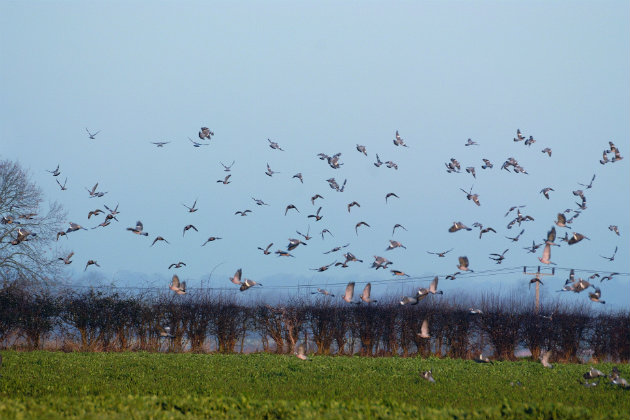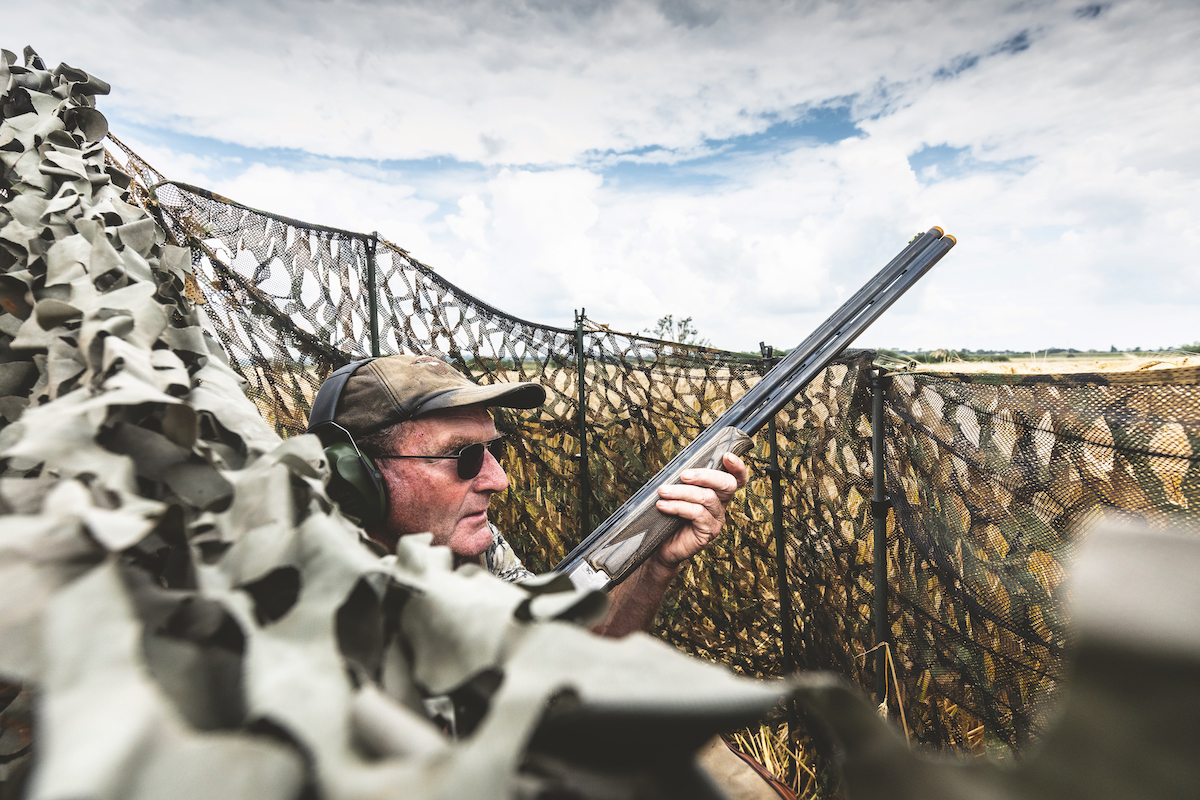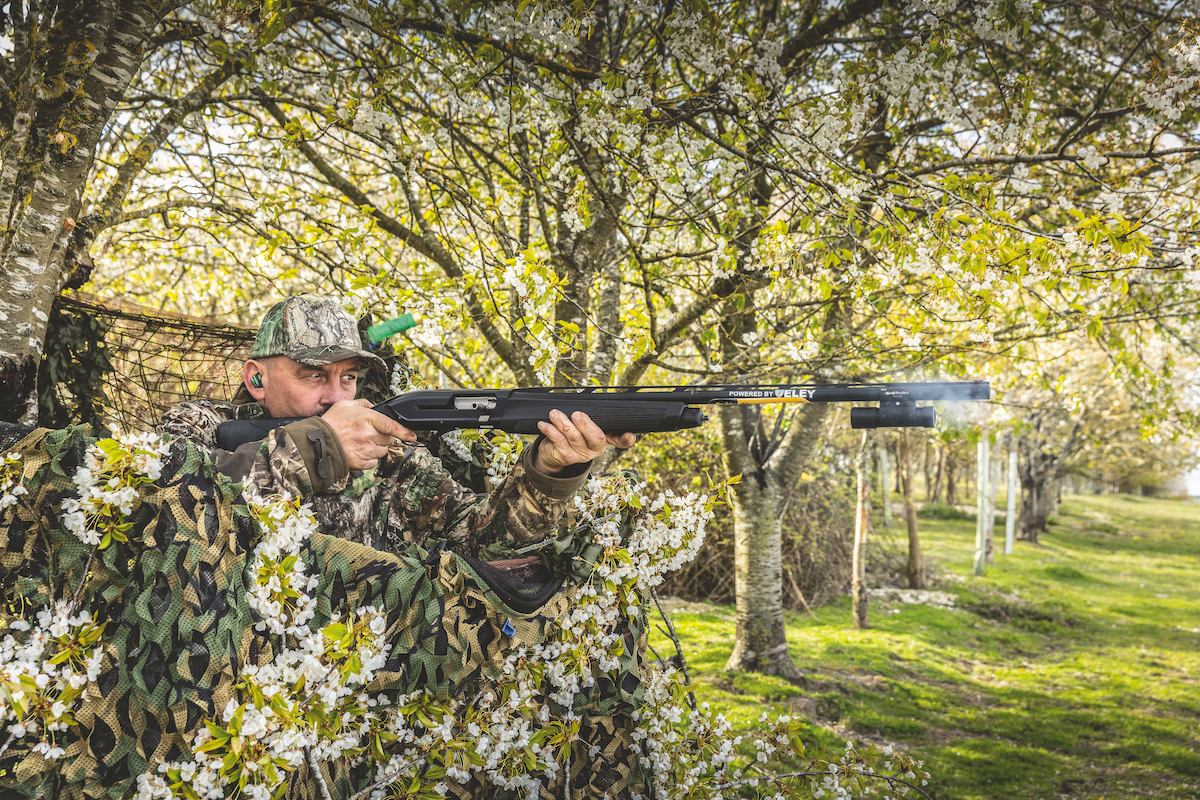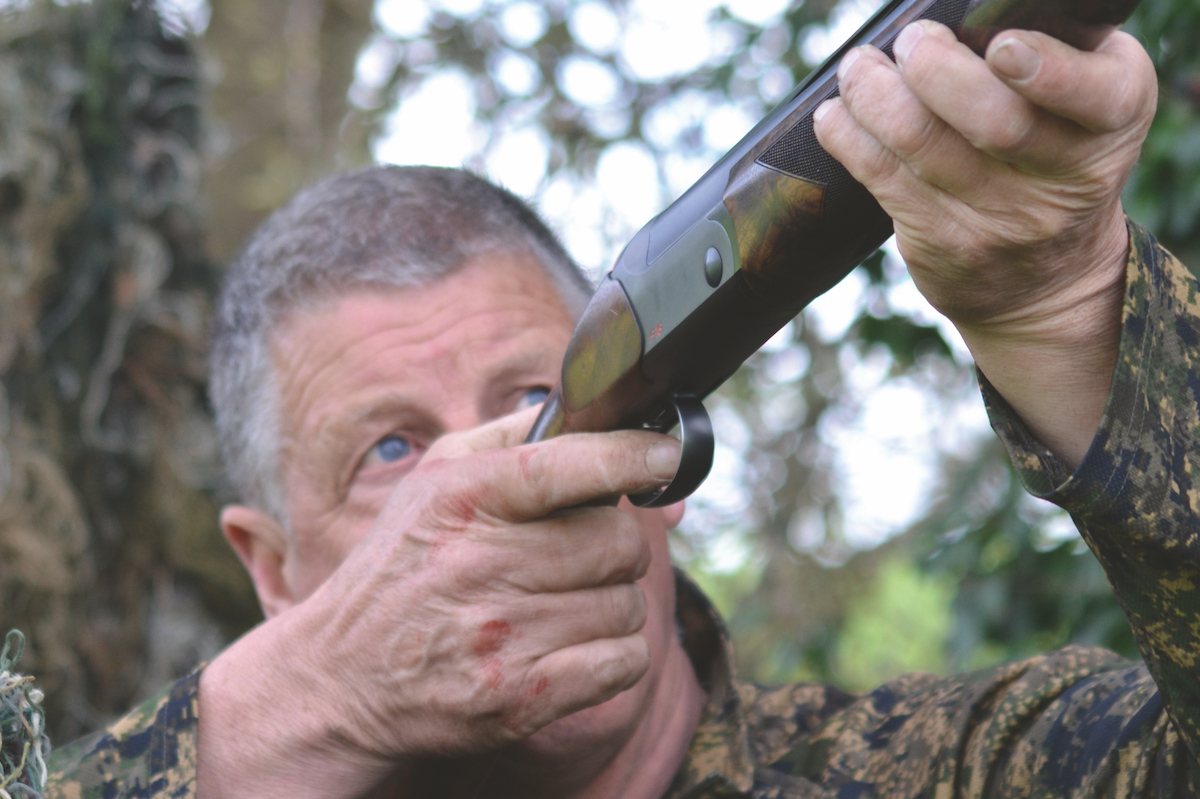Pigeon shooting days – how they have changed!
The modern woodpigeon is an extremely mobile and adaptable bird, making pigeon shooting nowadays a real challenge, says Peter Theobald

Shooters of my age often lament that things were better in “the good old days”, when all you had to do was throw an old stuffed grey sock out on a likely looking field and pigeons would swarm to their doom. They would recall flocks of woodies leaving the roosting woods that were so big it would take 20 minutes to pass over. But, were pigeon shooting days really like this?
Average bags were around 30
Entries from my diary going back 45 years often revealed uncooperative birds that ignored my decoys, or simply cleared off after the first shot. Admittedly, I was still learning the art of decoying, but average bags were probably around the 30 to 40 mark, with very occasional remarkable pigeon shooting days.
Relying on fieldcraft
In hindsight, the thing I was doing wrong in my keeness to shoot pigeons was chasing the birds too often, and making them decoy shy. Of course, we didn’t have the modern aids that are available today, relying instead on homemade contraptions and fieldcraft. Even camo nets were not readily available, apart from ex-army examples, which were hideously heavy. I relied entirely on natural hides cut from the hedge where I intended to set up. My kit consisted of a gun, bag of cartridges, machete to make the hide, homemade game carriers sufficient for about 100 birds and a sackful of decoys, all easily transported to the field in one trip. I would build my pattern with dead birds shot on the day, and propped up on sticks cut from the hedge. But the simple fact is there were not the number of birds in my part of Essex to make the bags we routinely shoot today.

Competition for shootable fields was keen
Fierce competition for shootable fields
It was a very cheap sport to partake in, so most farmhands would “have a crack at the pigeons” at drilling time and after harvest. Cartridges were £30 a thousand, and a pigeon would fetch 40p, making them worthwhile to take into the gamedealer even if you had only shot a dozen. This made competition for shootable fields very fierce and jealously guarded. I would often turn up to shoot a field, only to find another decoyer had beaten me to it. Though this only spurred me on to improve my fieldcraft.
Pigeon numbers have risen dramatically
So, what is the status of the woodpigeon, and those who persue it, today? There is no doubt that numbers overall have risen dramatically, and continue to do so, primarily due to the introduction of oilseed rape into farmers’ crop rotations 50 years ago. It enabled pigeon populations to thrive through harsh winters whereas previously a large percentage would perish. Also, and more recently, pigeons have taken to breeding in suburbia where they are virtually predator free.
Urban pigeons on the move
At least 50 per cent of the birds Paul and I shoot are coming in from urban flightlines, sometimes in astonishing numbers. Since harvest, we have killed 1,100 pigeons from one field serviced entirely by flightlines coming from a nearby town, and it hasn’t made a dent in the population! As a double whammy for the farmer, relatively few pigeons are actually killed on his rape during the winter months. Most outings are really bird scaring exercises. This is compounded by the farmers continually moving the birds on from their crops, though this seldom if ever results in pigeons going home to roost with an empty crop.

Pigeon numbers are rising to the point where some farmers are giving up
Some farmers giving up growing rape and peas
If anything, Paul and I do even more reconnaissance than ever, planning for that big day that we both enjoy. We know managing the pigeon populations on our permissions, and being patient enough to let situations build, results in bigger bags – the only thing that most farmers are interested in. We are responsible enough to turn out to defend vulnerable crops when there is little chance of making a bag, usually in winter, on rape, provided the farmer is prepared to work with us at other times of the year. This can mean leaving a stubble for one more day, or starting to cultivate on the other side of the field we are shooting in. Many people say we are obsessed with large bags but the fact remains that despite the numbers we are killing, the overall pigeon numbers are rising to the point where some farmers are giving up on growing rape and peas.

The pigeon can be very gullible in the right circumstances
Pigeons can be gullible
The modern woodpigeon is an extremely mobile and adaptable bird, making its downfall a challenge for the average decoyer. But it can also be very gullible in the right circumstances and this is the situation Paul and I look for. If we have found a food source that is attracting all of the local pigeon population, with no alternatives nearby, we will be 95 per cent certain that we will be able to get them to cooperate and kill a large bag. Long may it continue.
Pigeon shooting: 6 pieces of kit you won’t want to be without…
Pigeon shooting expert, Peter Theobald, runs through his list of ‘must have’ decoying accessories.
Top tips for a successful pigeon shooting technique
I am so fortunate to be out and about shooting pigeon all the time. I’ve had the privilege to learn from some of…
How to choose the right shotgun and cartridge for pigeon shooting
Shotguns and cartridges for pigeon shooting It’s taken me a few years to discover the best shotguns and cartridges for…











